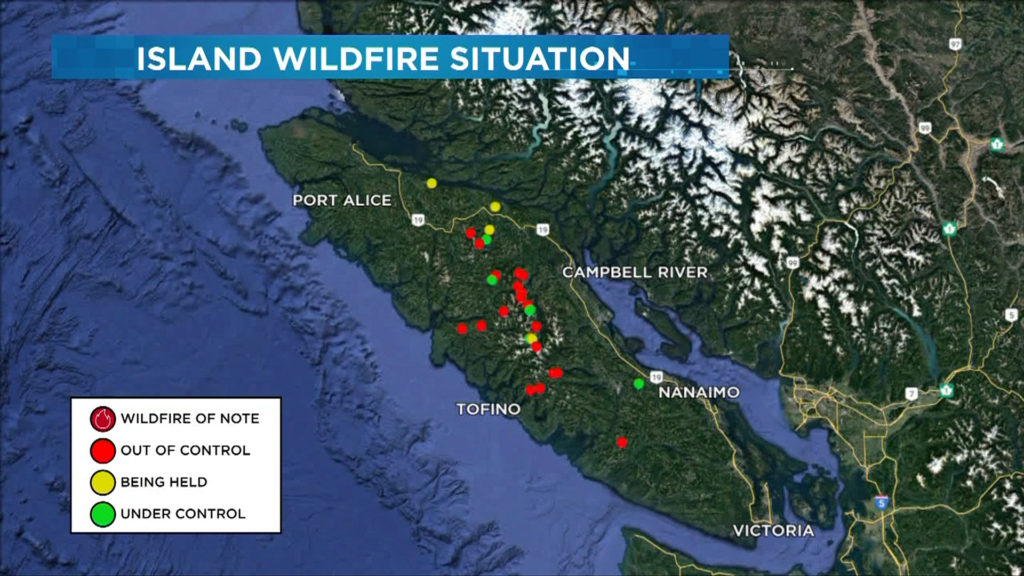 Nanaimo-based Coastland Wood Industries, a privately owned manufacturer of second-growth Douglas-fir veneer and other engineered wood products, hosted a mill and log-yard tour on Saturday, September 9th for the International Order of Hoo-Hoo, a fraternal service organization whose members are involved in forestry, logging and forest products industries.
Nanaimo-based Coastland Wood Industries, a privately owned manufacturer of second-growth Douglas-fir veneer and other engineered wood products, hosted a mill and log-yard tour on Saturday, September 9th for the International Order of Hoo-Hoo, a fraternal service organization whose members are involved in forestry, logging and forest products industries.
Leading the mill tour on behalf of Coastland was Keith Hall, VP Fibre Supply and his colleague and log buyer Mark Lade. Hall—a member of the Vancouver Chapter of Hoo-Hoo—opened with a summary of Coastland’s establishment in 1988 and its growth from a single line veneer mill to a triple line mill with an offsite drying facility, two barge loading facilities and three log sorts. Coastland currently employs 280 people and operates 24 hours a day, 7 days a week.
Speaking passionately about the heart of the operation, Hall noted the speed and efficiency of Coastland’s three veneer lathes, each of which generates between 800 and 1000 linear feet of veneer per minute (which equates to about 1.5 billion square feet of veneer, 1/8th basis annually). Currently, 75% of the veneer is dried at Coastland’s drying facility on Annacis Island in Delta, BC., and 25% is sold as green veneer.

 Yesterday we had the great honour of attending a 100th birthday celebration for renowned BC forester, Gerry Burch. The event, organized by CIF Vancouver chapter, was held on the patio at the Van Dusen Gardens in Vancouver. Appropriately, the party was surrounded by trees and the venue was sparkling with sunlight. Gerry was one of the first guests to arrive, proudly bringing along special birthday messages from the King and Queen of England and the Prime Minister of Canada! After a birthday serenade, and a rousing ‘three cheers for Gerry’ lead by his friend Alan Fry, we heard several tributes from friends and colleagues. Finally, Gerry took the microphone. One hundred years hasn’t diminished Gerry’s ability to capture an audience! He started off saying, “This is not the time to talk about the state of the industry … but I’d like to do that!” He wrapped up his address with a personal message to those in the room, saying, “You meet a lot of people in your life and most end up being acquaintances, but then there’s a few who become friends and then there’s a few of those who become special friends. I look upon you people as being special friends!”
Yesterday we had the great honour of attending a 100th birthday celebration for renowned BC forester, Gerry Burch. The event, organized by CIF Vancouver chapter, was held on the patio at the Van Dusen Gardens in Vancouver. Appropriately, the party was surrounded by trees and the venue was sparkling with sunlight. Gerry was one of the first guests to arrive, proudly bringing along special birthday messages from the King and Queen of England and the Prime Minister of Canada! After a birthday serenade, and a rousing ‘three cheers for Gerry’ lead by his friend Alan Fry, we heard several tributes from friends and colleagues. Finally, Gerry took the microphone. One hundred years hasn’t diminished Gerry’s ability to capture an audience! He started off saying, “This is not the time to talk about the state of the industry … but I’d like to do that!” He wrapped up his address with a personal message to those in the room, saying, “You meet a lot of people in your life and most end up being acquaintances, but then there’s a few who become friends and then there’s a few of those who become special friends. I look upon you people as being special friends!”

 West Fraser is planning to add another Alberta sawmill to its suite of Canadian assets. West Fraser already owns half a dozen lumber and plywood mills in Alberta. The company says it has entered into an agreement to buy Spray Lake Sawmills in Cochrane – for $140 million. Spray Lake Sawmills produces treated wood products, dimensional lumber and a wood residuals and biproducts, the company says. It has an annual lumber capacity of 155 million board feet and holds two forest management agreements with the Government of Alberta with a total annual allowable cut of approximately 500,000 cubic metres. “We are excited to welcome Spray Lake Sawmills to the West Fraser family,” CEO Ray Ferris said. …“With its solid safety performance, and focus on sustainability and community, the mill is an ideal fit for West Fraser.”
West Fraser is planning to add another Alberta sawmill to its suite of Canadian assets. West Fraser already owns half a dozen lumber and plywood mills in Alberta. The company says it has entered into an agreement to buy Spray Lake Sawmills in Cochrane – for $140 million. Spray Lake Sawmills produces treated wood products, dimensional lumber and a wood residuals and biproducts, the company says. It has an annual lumber capacity of 155 million board feet and holds two forest management agreements with the Government of Alberta with a total annual allowable cut of approximately 500,000 cubic metres. “We are excited to welcome Spray Lake Sawmills to the West Fraser family,” CEO Ray Ferris said. …“With its solid safety performance, and focus on sustainability and community, the mill is an ideal fit for West Fraser.”
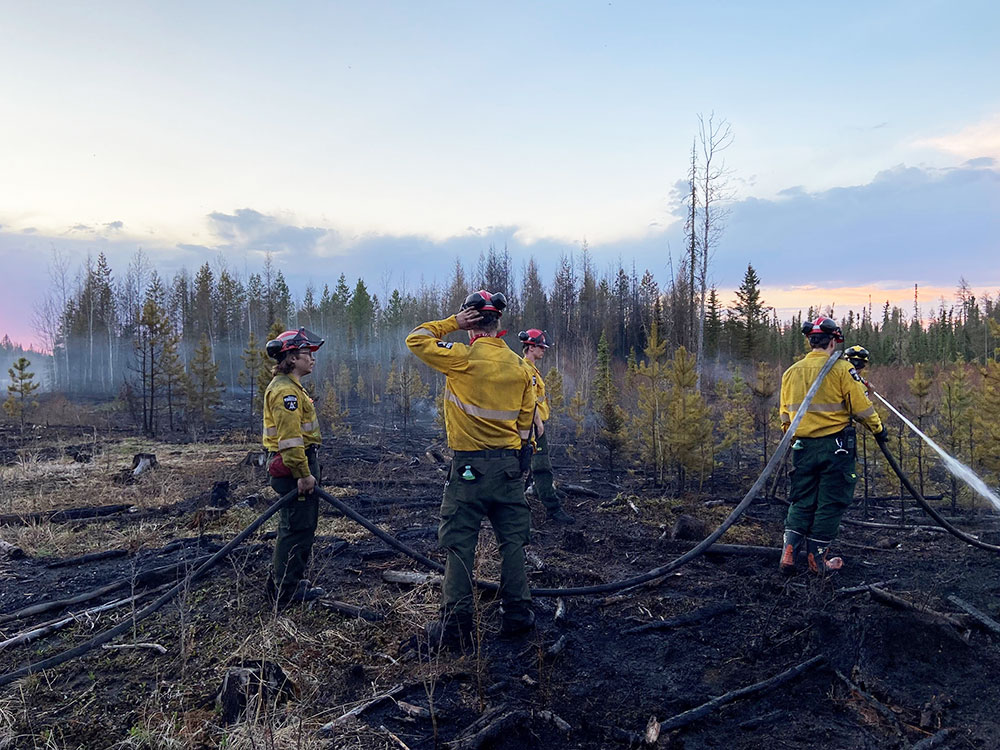

 Port Alberni – Huu-ay-aht First Nations announces completion of an Old-Growth Interim Report that outlines the work completed to date on an Indigenous-led integrated stewardship approach to ecosystem health and biodiversity, including old-growth forests. In partnership with Huu-ay-aht Forestry Limited Partnership, C̓awak ʔqin Forestry, Mosaic Forest Management, the Old-Growth Interim Report is a step towards finalizing the Hišuk ma c̓awak Integrated Resource Management Plan (HIRMP). The HIRMP integrates a full range of values and stewardship measures across the entire Huu-ay-aht Ḥahuułi (Traditional Territory). As part of the HIRMP, the partners developed a draft design of the M̓aƛasap (to take a bite out of) Network that integrates old forests, riparian habitat, rare ecosystems, wildlife habitat and features, and cultural and traditional use areas to maintain connectivity across the Ḥahuułi.
Port Alberni – Huu-ay-aht First Nations announces completion of an Old-Growth Interim Report that outlines the work completed to date on an Indigenous-led integrated stewardship approach to ecosystem health and biodiversity, including old-growth forests. In partnership with Huu-ay-aht Forestry Limited Partnership, C̓awak ʔqin Forestry, Mosaic Forest Management, the Old-Growth Interim Report is a step towards finalizing the Hišuk ma c̓awak Integrated Resource Management Plan (HIRMP). The HIRMP integrates a full range of values and stewardship measures across the entire Huu-ay-aht Ḥahuułi (Traditional Territory). As part of the HIRMP, the partners developed a draft design of the M̓aƛasap (to take a bite out of) Network that integrates old forests, riparian habitat, rare ecosystems, wildlife habitat and features, and cultural and traditional use areas to maintain connectivity across the Ḥahuułi.  For years the B.C. government has faced criticism over significant gaps in legislation and policy that leave nature vulnerable to exploitation. Now, in the midst of a global biodiversity crisis, the province is developing new ways to protect species. But B.C.’s forestry watchdog says the province should make better use of the tools it already has under the Forest and Range Practices Act to stem the habitat losses driving species decline. “Although government has a range of flexible and adaptive tools, its overall approach has not achieved a reduction in the number of species at risk. Instead, many species like the northern goshawk have become more imperiled as threats to habitat availability increase,” the Forest Practices Board wrote in a recent report. The Ministry of Forests said the “government is working on a variety of initiatives related to managing habitat for species at risk.”
For years the B.C. government has faced criticism over significant gaps in legislation and policy that leave nature vulnerable to exploitation. Now, in the midst of a global biodiversity crisis, the province is developing new ways to protect species. But B.C.’s forestry watchdog says the province should make better use of the tools it already has under the Forest and Range Practices Act to stem the habitat losses driving species decline. “Although government has a range of flexible and adaptive tools, its overall approach has not achieved a reduction in the number of species at risk. Instead, many species like the northern goshawk have become more imperiled as threats to habitat availability increase,” the Forest Practices Board wrote in a recent report. The Ministry of Forests said the “government is working on a variety of initiatives related to managing habitat for species at risk.”
 The upcoming Forest of Fungi event being held in the Beaver Lodge Lands on Sept. 23 will help demystify the various species of mushrooms growing amongst the trees. The event will be part of National Forest Week, a public outreach and education week held across the country to help expand people’s knowledge about forests. “This year’s theme is supporting biological diversity,” said Heather Soo from the Canadian Institute of Forestry. That theme fits nicely with Soo’s other interest: mushrooms. …Soo will also be taking part in the Cumberland Fungus Festival, which will be the week after the Campbell River event.
The upcoming Forest of Fungi event being held in the Beaver Lodge Lands on Sept. 23 will help demystify the various species of mushrooms growing amongst the trees. The event will be part of National Forest Week, a public outreach and education week held across the country to help expand people’s knowledge about forests. “This year’s theme is supporting biological diversity,” said Heather Soo from the Canadian Institute of Forestry. That theme fits nicely with Soo’s other interest: mushrooms. …Soo will also be taking part in the Cumberland Fungus Festival, which will be the week after the Campbell River event.










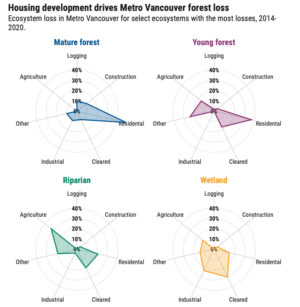 Metro Vancouver lost the equivalent of six Stanley Park’s worth of natural habitat in the past decade, according to a report sent to the authority’s regional planning committee. From 2009 to 2020, the region lost 250 square kilometres of forests, fields, wetlands and other ecosystems, mainly from logging, agriculture and development. “The speed and scale of the loss observed is concerning,” said Laurie Bates-Frymel, a city planner. Metro hopes to increase protected natural lands from 40 to 50 per cent of the regional land base by 2050. The natural habitat lost since 2009 represents roughly 1 1/2 per cent of the region’s land. …To combat forest loss from logging, which occurred primarily in the Ridge-Meadows region, the report recommends implementing policies to protect land designated for “conservation and recreation.” …Moore acknowledged the conflicting demands facing municipalities, which are trying to increase housing while simultaneously preserving natural spaces.
Metro Vancouver lost the equivalent of six Stanley Park’s worth of natural habitat in the past decade, according to a report sent to the authority’s regional planning committee. From 2009 to 2020, the region lost 250 square kilometres of forests, fields, wetlands and other ecosystems, mainly from logging, agriculture and development. “The speed and scale of the loss observed is concerning,” said Laurie Bates-Frymel, a city planner. Metro hopes to increase protected natural lands from 40 to 50 per cent of the regional land base by 2050. The natural habitat lost since 2009 represents roughly 1 1/2 per cent of the region’s land. …To combat forest loss from logging, which occurred primarily in the Ridge-Meadows region, the report recommends implementing policies to protect land designated for “conservation and recreation.” …Moore acknowledged the conflicting demands facing municipalities, which are trying to increase housing while simultaneously preserving natural spaces. 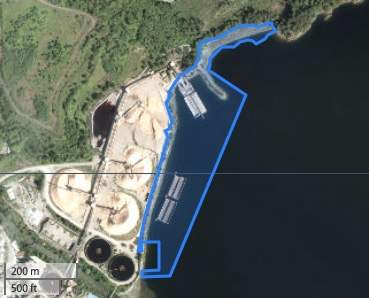 Howe Sound Pulp & Paper Corporation (HSPP) has submitted an
Howe Sound Pulp & Paper Corporation (HSPP) has submitted an 
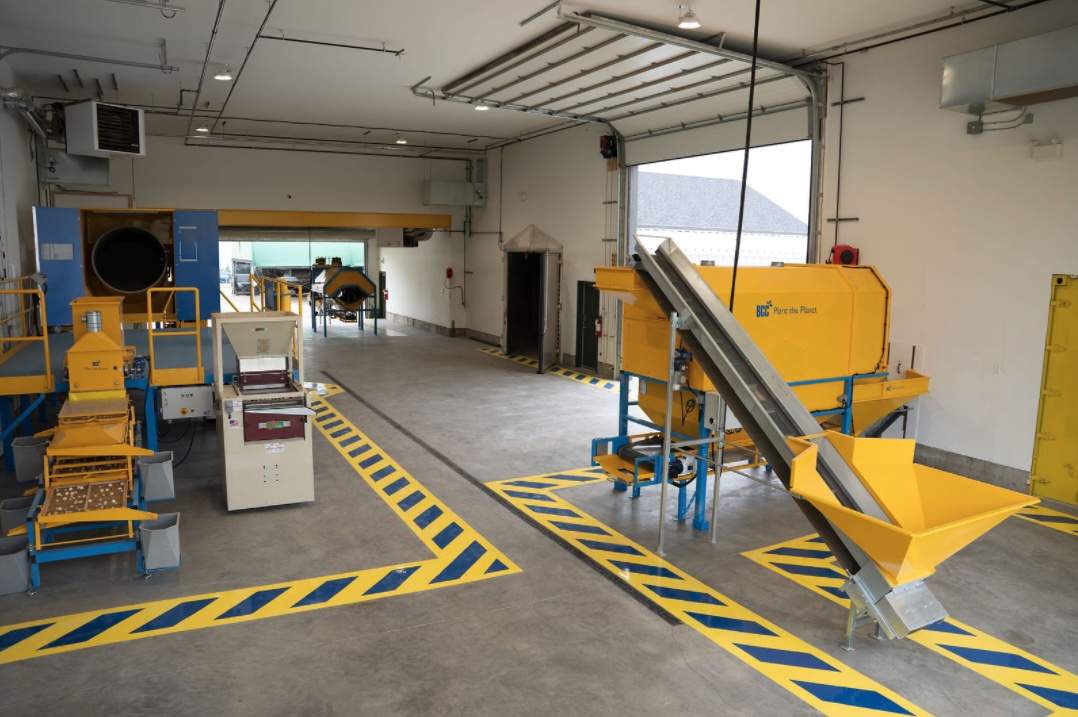 Vernon Seed Orchard Company jointly owned by West Fraser Mills ltd, Canadian Forest Products Ltd and Lakeland Mills Ltd recently unveiled its new Interior Extraction Facility.
Vernon Seed Orchard Company jointly owned by West Fraser Mills ltd, Canadian Forest Products Ltd and Lakeland Mills Ltd recently unveiled its new Interior Extraction Facility. 

 On his way from photographing a juvenile northern goshawk earlier this year, local ecologist Bob Brett happened to run into a forester and mentioned the rare sighting of the protected, red-listed species. His response? “Well, that’s bad for forestry.” But to Brett, a vocal environmental advocate and co-founder of the Whistler Naturalists, it was anything but negative. “It’s a good news story if we have northern goshawks and those other animals that require specialized habitat,” Brett said. “It’s a sign that we’re doing things well. I would love to have a situation where foresters get excited and happy when we find goshawks, rather than see it as an impediment to logging.” …The impact from the lack of formal protections was clear this summer when Brett said recent logging in the Cheakamus Community Forest (CCF) came as close as 30 metres to a goshawk nesting site.
On his way from photographing a juvenile northern goshawk earlier this year, local ecologist Bob Brett happened to run into a forester and mentioned the rare sighting of the protected, red-listed species. His response? “Well, that’s bad for forestry.” But to Brett, a vocal environmental advocate and co-founder of the Whistler Naturalists, it was anything but negative. “It’s a good news story if we have northern goshawks and those other animals that require specialized habitat,” Brett said. “It’s a sign that we’re doing things well. I would love to have a situation where foresters get excited and happy when we find goshawks, rather than see it as an impediment to logging.” …The impact from the lack of formal protections was clear this summer when Brett said recent logging in the Cheakamus Community Forest (CCF) came as close as 30 metres to a goshawk nesting site.


 BRITISH COLUMBIA — It’s going to be another dismal year for Fraser River sockeye, but the sport fishing industry is reportedly enjoying a banner year thanks to improved chinook and coho abundance. Pink salmon are also returning in near-record numbers, though that doesn’t necessarily mean commercial fishermen will have the chance to catch them – if they are mingled with threatened species, like sockeye – nor are they likely to make much profit from them, given depressed prices. …Fraser River pink salmon were expected to come in this year at 6.1 million. But as of last week, based on test fisheries, the Pacific Salmon Commission upped its in-season forecast to 20 million. If that forecast is fulfilled, it would be a near-record return – the record being 24 million Fraser River pinks in 2003. Fraser River sockeye, on the other hand, appear to be coming in closer to their pre-season forecast of just 1.6 million.
BRITISH COLUMBIA — It’s going to be another dismal year for Fraser River sockeye, but the sport fishing industry is reportedly enjoying a banner year thanks to improved chinook and coho abundance. Pink salmon are also returning in near-record numbers, though that doesn’t necessarily mean commercial fishermen will have the chance to catch them – if they are mingled with threatened species, like sockeye – nor are they likely to make much profit from them, given depressed prices. …Fraser River pink salmon were expected to come in this year at 6.1 million. But as of last week, based on test fisheries, the Pacific Salmon Commission upped its in-season forecast to 20 million. If that forecast is fulfilled, it would be a near-record return – the record being 24 million Fraser River pinks in 2003. Fraser River sockeye, on the other hand, appear to be coming in closer to their pre-season forecast of just 1.6 million.

